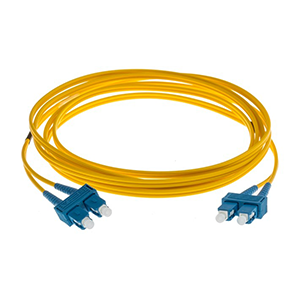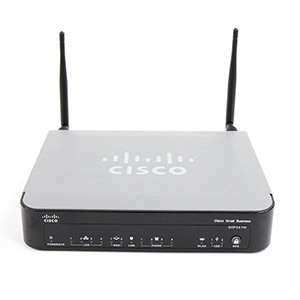The burial depth of optical fiber cables is critical to the security and reliability of the network. This article will explore the minimum burial depth of optical fiber cables. We first outline the relevant international and regional standards and analyze the minimum burial depth requirements of each standard.
Next, we explore the main factors that affect the minimum burial depth of optical fiber cables, including safety, maintenance convenience, and environmental factors. Then, we detail the minimum burial depth in different scenarios, such as urban roads, suburban rural areas, and special locations. Finally, we explore alternatives to slightly shallow burial or ground laying, and analyze their advantages and disadvantages and applicable scenarios.
Standard requirements for the burial depth of optical fiber cables
The standard requirements for the burial depth of optical fiber cables are usually between 0.6 meters and 1 meter to ensure that the cables are protected from external damage and environmental influences. The specific depth depends on the geographical location, soil type, and surrounding facilities. In urban areas, 0.6 meters is usually recommended to avoid conflicts with other underground pipelines; while in rural areas or special terrains, the depth may be slightly reduced or increased. In addition, when crossing roads or railways, the burial depth needs to be deepened to ensure the safety and stability of the cable.
Globally, the requirements for the burial depth of optical fiber cables are mainly reflected in the following major international and regional standards:
1. International Electrotechnical Commission (IEC) standards:
- IEC 60794-1-1 specifies the general burial requirements for optical cables, including the minimum burial depth.
- According to this standard, the minimum burial depth of optical cables in general areas is 0.6 meters.
2. National Electric Safety Code (NESC):
- NESC standards provide guidance for the burial of optical cables in the United States.
- It stipulates that the minimum burial depth of optical cables under roads is 0.9 meters.
- The minimum burial depth under railway lines is 1.2 meters.
3. European Committee for Electrotechnical Standardization (CENELEC):
- CENELEC has established a unified standard for the burial of optical cables in Europe.
- According to this standard, the minimum burial depth of optical cables in urban areas is 0.8 meters, and 0.6 meters in suburban areas.
4. Chinese National Standard GB 50366-2005:
- This standard stipulates that the minimum burial depth of optical cables under municipal roads is 0.8 meters.
- For rural areas, a shallower burial depth of about 0.5 meters is allowed.
- In some special locations, such as rivers and railways, deeper burial is required.
From the above standards, it can be seen that there are certain differences in the minimum burial depth requirements for optical fiber cables in different regions and countries, which are mainly affected by local actual conditions and regulatory requirements, such as:
- Urbanization degree and density of underground pipelines
- Topographic features, such as mountains and plains
- Degree of demand for disaster resistance
In general, these standards provide clear depth guidance for the safe and reliable burial of optical fiber cables.
Factors affecting the minimum burial depth of optical fiber cables
Factors affecting the minimum burial depth of optical fiber cables include geographical environment, soil type, climatic conditions and density of underground facilities. In urban areas, dense underground pipelines require deeper burial to avoid conflicts; while in rural areas, soil type and ground water level changes may also affect depth requirements. In addition, areas with heavy traffic require deeper burial to resist external pressure and potential damage. These factors together determine the safety and long-term stability of fiber optic cables.
When determining the minimum burial depth of fiber optic cables, the following key factors need to be considered:
1. Safety considerations:
(1) Prevent mechanical damage:
- A deeper burial depth can better protect the cable from external mechanical damage.
- Such as damage caused by vehicle running over, engineering construction, etc.
(2) Resist natural disasters:
- Deeper burial helps improve the cable’s ability to resist natural disasters such as floods and earthquakes.
- Ensure the safe and reliable operation of the fiber optic network.
(3) Coordination with other pipelines:
- Fiber optic cables should be staggered with other pipelines at the specified depth to avoid mutual interference.
- Such as the separation distance requirements from dangerous pipelines such as high-voltage cables and gas pipelines.
2. Maintenance convenience:
(1) Post-maintenance requirements:
- Reasonable burial depth is conducive to the subsequent maintenance work.
- Too deep burial will increase the difficulty and cost of maintenance.
(2) Positioning and troubleshooting:
- Appropriate burial depth is conducive to the positioning and troubleshooting of cable faults.
- Too shallow or too deep may affect the positioning accuracy and maintenance efficiency.
3. Environmental factors:
(1) Topography:
- A relatively shallow burial depth can be used in plain areas.
- Mountainous and hilly terrains usually require deeper burial for enhanced protection.
(2) Soil properties:
- Clay soil provides better protection for cables and can be buried at a shallower depth.
- Sandy soil and rocky geology require deeper burial for enhanced protection.
In short, the determination of the minimum burial depth of optical fiber cables needs to take into account multiple requirements such as safety, maintenance convenience and environmental factors to achieve the best balance.
Minimum burial depth in different scenarios
The minimum burial depth in different scenarios is different. In urban areas, optical fiber cables are usually required to be buried at a depth of 0.6 meters to avoid interference with other underground facilities. In rural or non-dense areas, the depth can be reduced to 0.4 meters. In mountainous or rocky environments, the burial depth may be increased to more than 1 meter to prevent physical damage. Along busy roads, a depth of 1.2 meters is usually required to ensure the safety and stability of the cable.
For different application scenarios, the minimum burial depth requirements for optical fiber cables are also different, as follows:
1. Urban roads and sidewalks:
(1) Urban trunk roads:
- Minimum burial depth: 0.9 meters
- Protection measures: Use pipes or metal protective pipes
(2) Urban secondary roads:
- Minimum burial depth: 0.75 meters
- Protection measures: Pipe protection or metal protective pipes
(3) Sidewalks:
- Minimum burial depth: 0.45 meters
- Protection measures: Reinforced concrete protective plate or plastic pipe
Under urban roads, due to the heavy vehicle load, a deeper burial depth and enhanced protection measures are required. Sidewalks are relatively shallow.
2. Suburban and rural areas:
(1) Suburban areas:
- Minimum burial depth: 0.6 meters
- Protection measures: The number of pipes or protective pipes can be appropriately reduced
(2) Rural areas:
- Minimum burial depth: 0.45 meters
- Protection measures: Generally, simple plastic pipes are used
In suburban and rural areas with low population density, due to less surface activity, a shallower burial depth can be used.
3. Crossing special places such as railways and water bodies:
(1) Under railway lines:
- Minimum burial depth: 1.2 meters
- Protection measures: Use pipe penetration or pipe jacking
(2) Crossing rivers and waterways:
- Minimum burial depth: less than 1.5 meters
- Protection measures: Use sturdy pipes or metal protective pipes
In some special places that need to be crossed, deeper burial depths and enhanced protection measures are required to enhance the safety and anti-interference capabilities of the cable. In general, the minimum burial depth of optical fiber cables should be reasonably determined based on specific application scenarios and environmental characteristics to take into account safety, reliability and maintenance requirements.
Alternatives to Slightly Shallow Burial or Ground Laying
Alternatives to Slightly Shallow Burial or Ground Laying include the use of cable protection conduits, overhead cables, and prefabricated cable troughs. Cable protection conduits protect against physical damage while facilitating later maintenance; overhead cables are suitable for areas that are inconvenient to bury and reduce ground excavation; prefabricated cable troughs provide a quick installation solution suitable for temporary or flexible wiring needs.
In some special cases, alternatives to slightly shallow burial or ground laying can be considered instead of strictly following the minimum burial depth requirements. These alternatives include:
1. Use protective conduits or trough boxes:
- Sturdy plastic conduits or metal trough boxes can be used to protect fiber optic cables near the surface.
- Even at a shallow burial depth, they can provide protection against mechanical damage.
- Conduits or trough boxes can also facilitate subsequent inspection and maintenance operations.
2. Slight shallow burial:
- In some special scenarios, such as sidewalks and green belts, a shallow burial depth of 0.3-0.5 meters can be used.
- The advantage is that the project cost is low and the construction is relatively simple.
- The disadvantage is that the ability to resist natural disasters and external damage is relatively weak.
3. Ground laying:
- In some remote and sparsely populated areas, it is possible to consider laying optical fiber cables directly on the surface.
- Applicable to mountainous areas, forests and other environments, which can greatly reduce project costs.
- However, special protection measures are required, such as using reinforced cables or covering protective plates.
Although these alternatives cannot completely replace the standard burial depth requirements, they can provide a more economical and efficient solution in special circumstances. Choosing which alternative to adopt requires comprehensive weighing and evaluation based on specific application scenarios, environmental conditions and economic factors.
Summary
Determining the reasonable minimum burial depth of optical fiber cables is the key to ensuring network security operations. Our company is a well-known domestic supplier of optical communication products, and has long focused on the research and development and application of optical fiber network solutions. We have rich practical experience in optical fiber cable engineering and can provide you with professional design and construction guidance.
Our products and services fully comply with major domestic and international standards, and have achieved excellent levels in safety, reliability and economy. At the same time, our team of engineers will tailor the best optical fiber cable burial solution for you according to your specific needs. Contact us now to learn more.
Minimum depth of optical cable FAQ
The minimum recommended burial depth is typically 24 inches (60 centimeters).
Yes, local regulations and standards can dictate different minimum depths for burial.
Shallow burial increases the risk of damage from digging, landscaping, or natural erosion.
Generally, the minimum depth remains the same, but urban areas may require additional protective measures.
Warning tapes or markers can be placed above the cable to alert excavators of its presence.
Yes, but it may require additional protective conduits to prevent damage.
Cease digging immediately and contact the utility companies for guidance to avoid damage.
Using a depth gauge or consulting with professionals can help ensure proper burial depth.
Yes, certain cables are rated for direct burial and are better suited for various soil conditions.
If not buried adequately, the cable may sustain damage, leading to signal loss or service interruptions.




